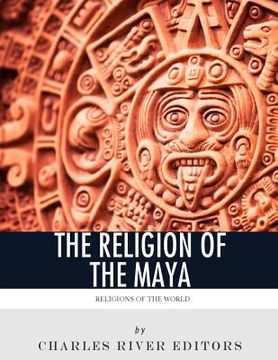Reseña del libro "Religions of the World: The Religion of the Maya (en Inglés)"
*Includes pictures of art depicting Mayan gods and goddesses. *Explains the Mayan calendar, ball game, sacrifice rituals, and other religious tenets. *Explains the evolution of the religion after the arrival of the Spanish. *Includes a Bibliography for further reading. "More than a collection of quaint mythology and exotic rituals, [Maya] religion was an effective definition of the nature of the world, answering questions about the origin of humanity, the purpose of human life on earth, and the relationship of the individual to his family, his society, and his gods. It is a religion which speaks to central and enduring problems of the civilized human condition: power, justice, equality, individual purpose, and social destiny." - A Forest of Kings: The Untold Story of the Ancient Maya In the years leading up to 2012, there has been much interest in the Maya calendar. Largely, this is because the calendar will complete its 5,200-year cycle on December 21, 2012, and this auspicious event has been misinterpreted as signaling the end of the world. For the Maya, the endings of calendar period of all lengths (cycles ranged from 20 days to centuries in length) were very important and required various types of rituals and offerings to be properly recognized. Often, the best acceptable "offering" was human blood, and Maya elites engaged in autosacrificial bloodletting to appease the deity presiding over the transition in question. Combined with the detailed Maya knowledge of astronomy, the calendar system functioned as a way for Maya priests and elites to know which particular god in their crowded pantheon was ruling at a particular moment. The Maya believed that each interval of time, embedded in units like the day, the night, the solar year, the k'atun (20 year cycle), the lunar cycle, and Venus's cycle, was governed by a certain deity. Such knowledge was considered vital in Maya cosmology and allowed the elites to maintain and consolidate power, effect political change, and lend religious veracity to monumental building projects. The blending of technologies and religion extended to writing for the Maya, who used a writing system to codify and standardize religio-political beliefs. It's also important to remember that though the Maya mysteriously disappeared in the middle of the last millennium, their culture survived and was passed down among peoples in the region. As a result, the religion has also evolved, and the conflation of traditional Maya religious beliefs has largely involved a shift from animistic polytheism to quasi-monotheism with continuing aspects of animism. The forest surrounding ancient Maya settlements was considered to be filled with spirits, some malevolent and some benign, and to protect their settlements, modern Maya villagers set a cross and a balam or "jaguar" spirit at each of the four entrances to the village. This demonstrates a clear blending of Catholic symbols (the cross) and Maya spiritual beliefs (the balam guardians) and cosmology (the four directions). The onset of Catholic religious hegemony influenced all aspects of Maya society, including religious life, and in a move that is typically Mesoamerican, Maya practitioners included aspects into Maya religious practices. Ritual sacrifice continued long after the arrival of the Spanish, and colonized Maya incorporated crucifixion as a method of human sacrifice. Also, though the last recorded Maya human sacrifice occurred in 1868, animal sacrifice continues to this day, and some Maya continue to make ritual offerings of animals (usually chickens), food, and drinks at mountain or cave shrines. Religions of the World: The Religion of the Maya examines the history and evolution of the Mayan religion, including its main tenets, the similarities it shares with other religions and the differences that make it unique. Along with pictures of important figures and places, you'll learn about the Maya religion like never before.

